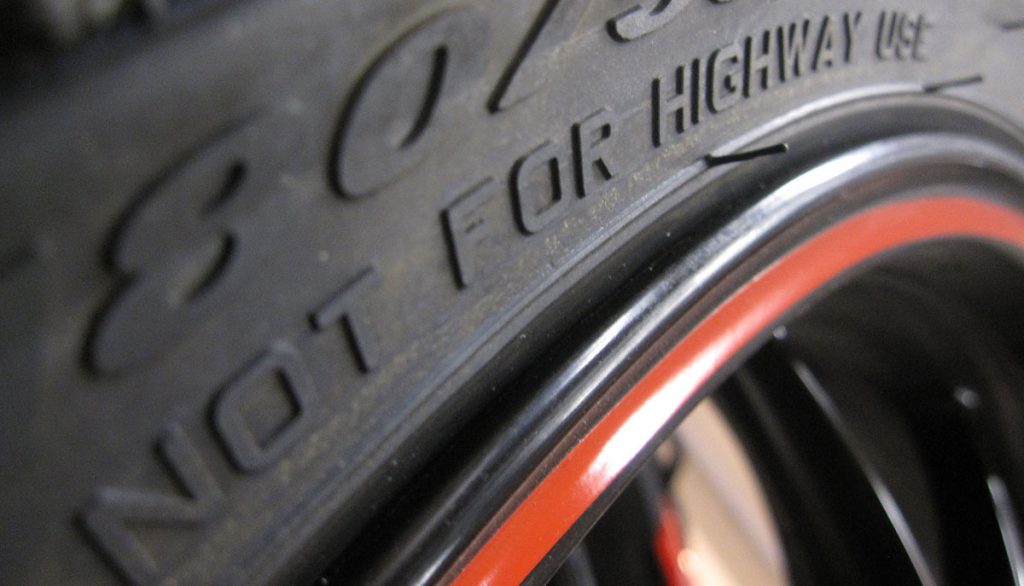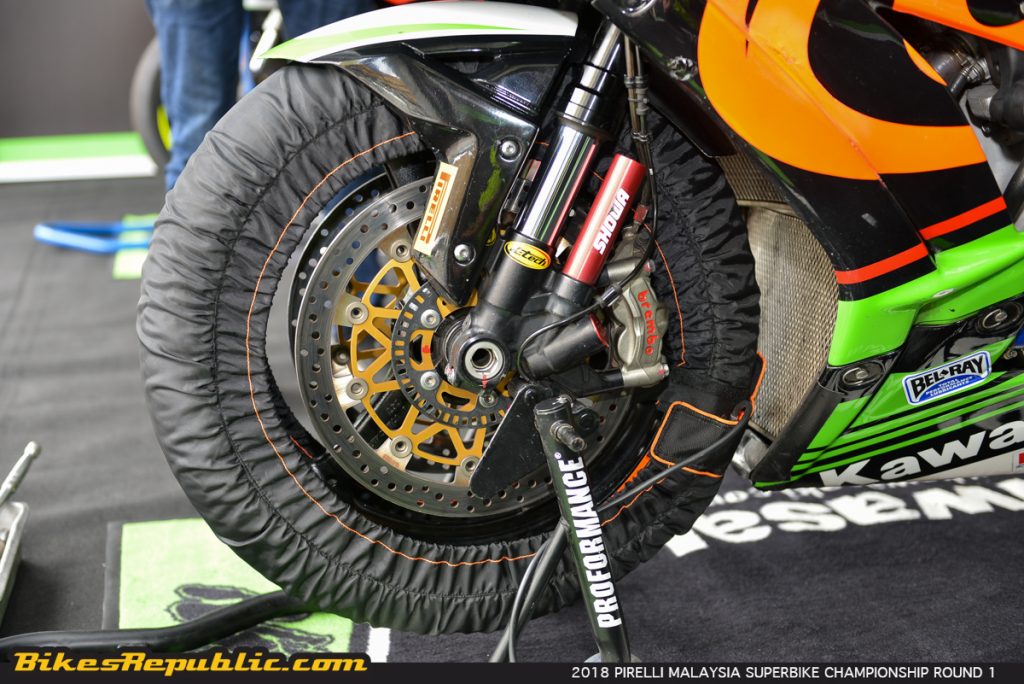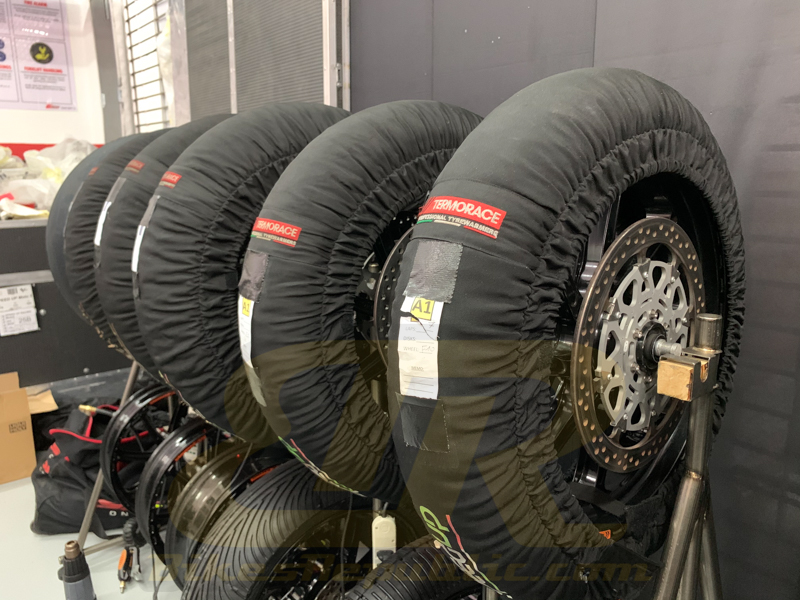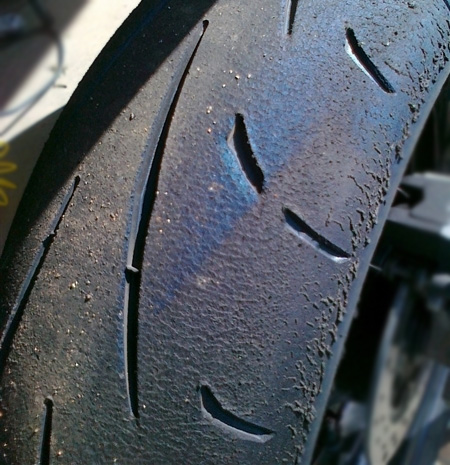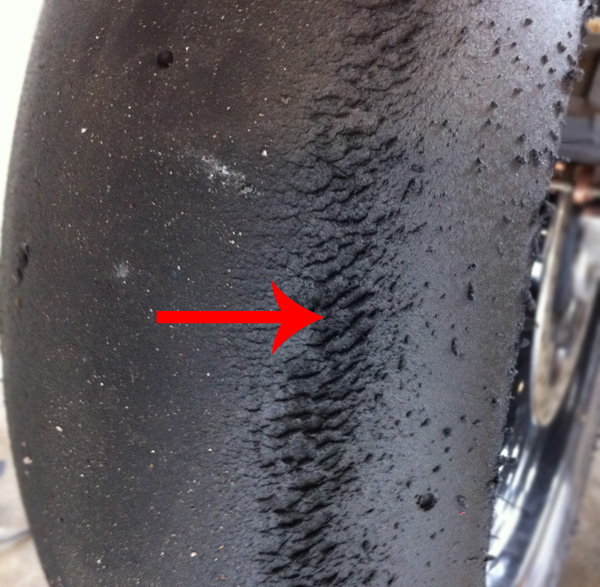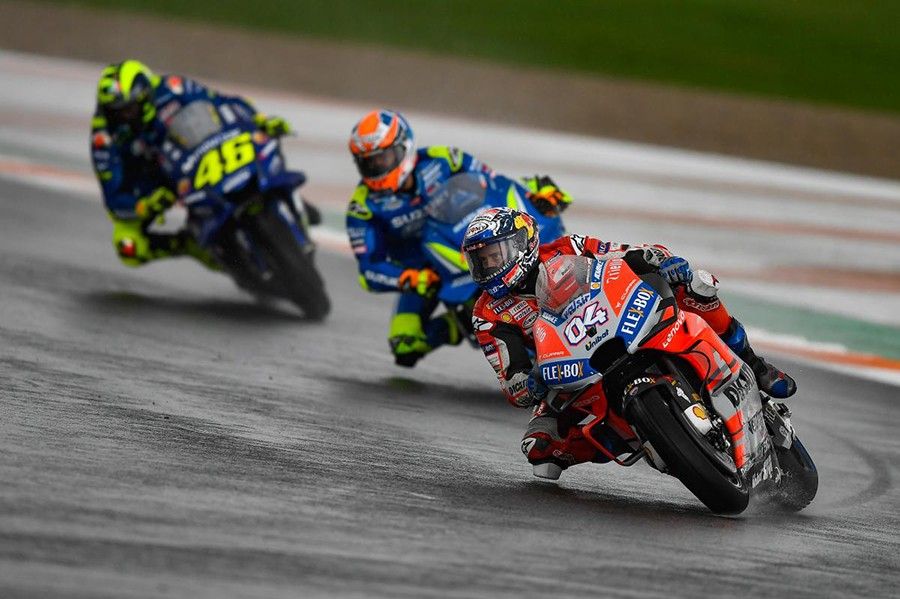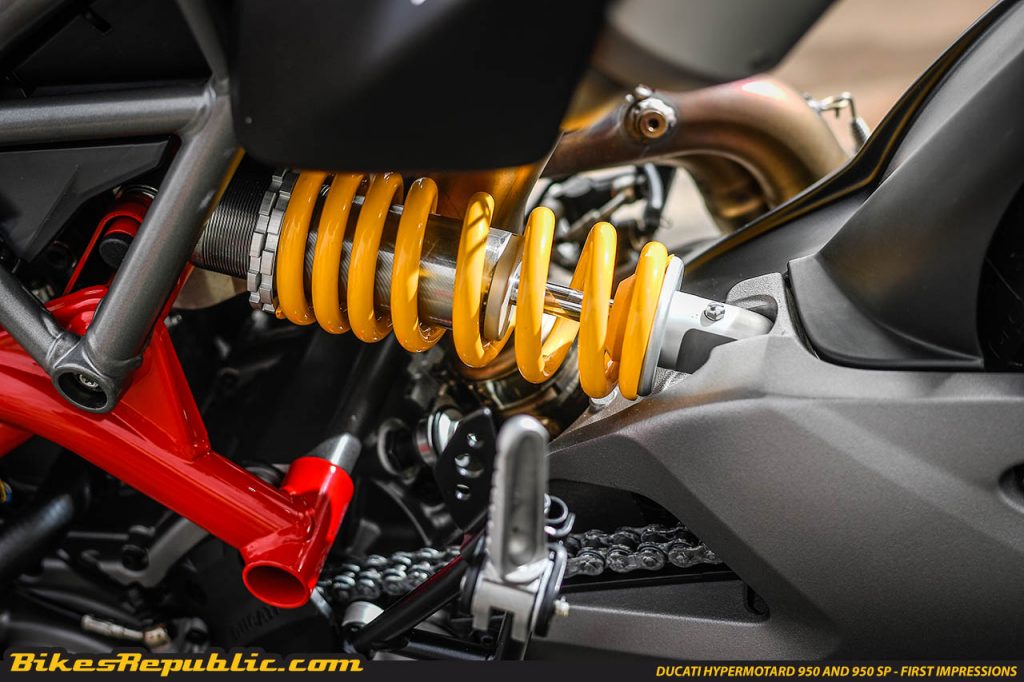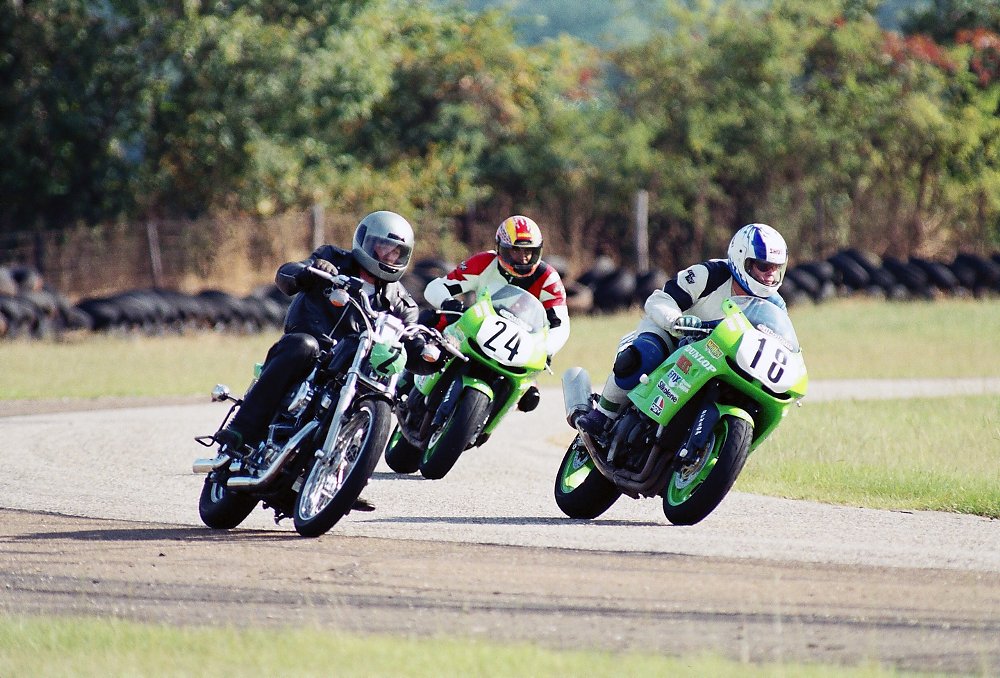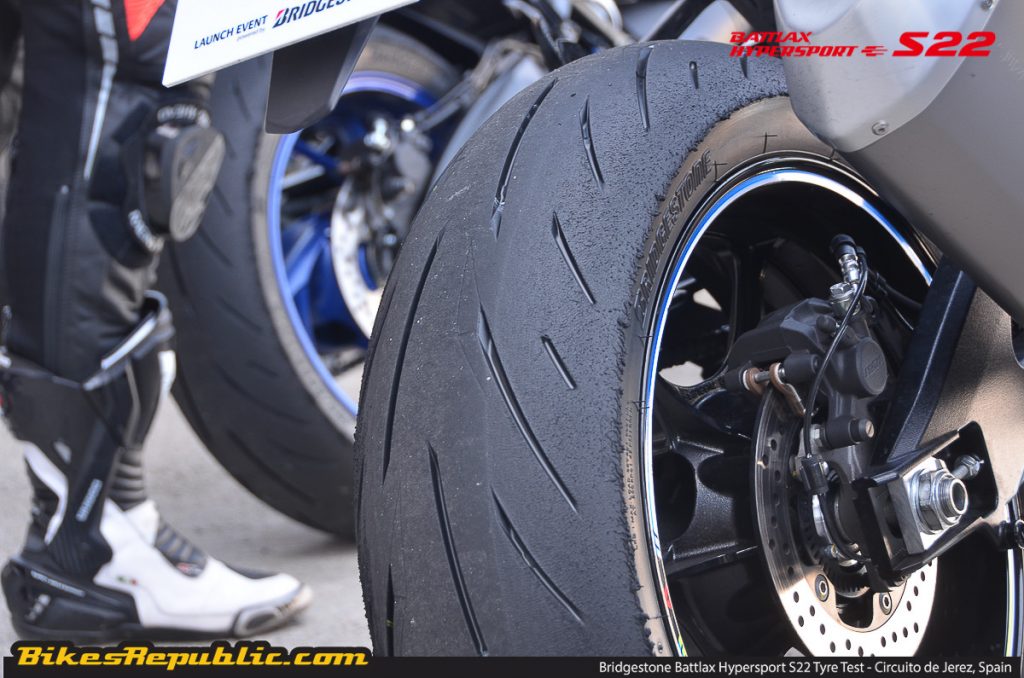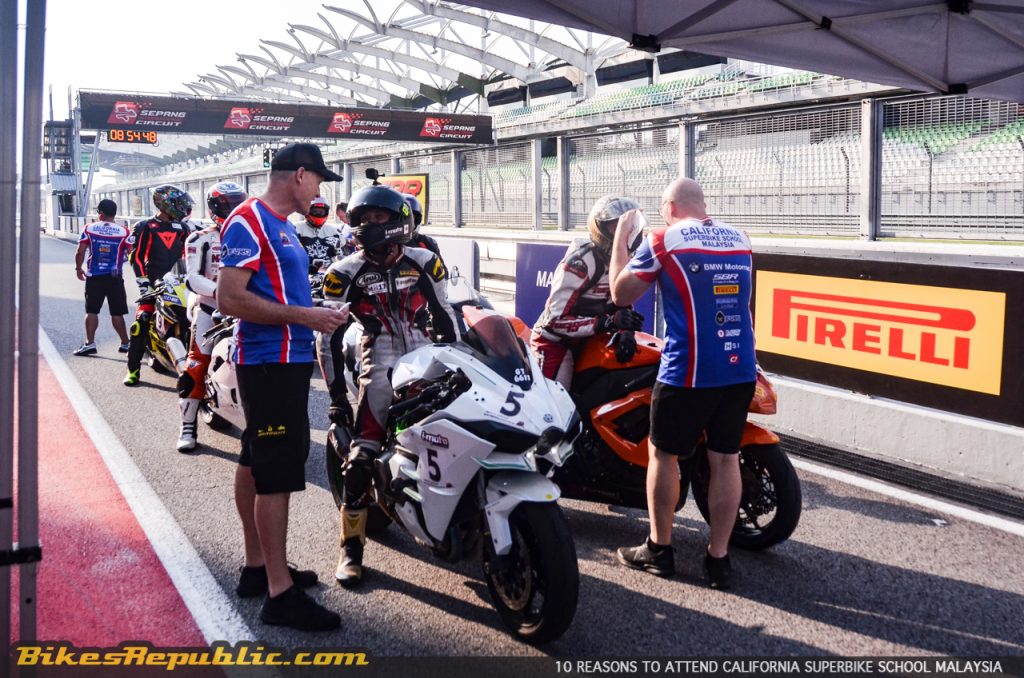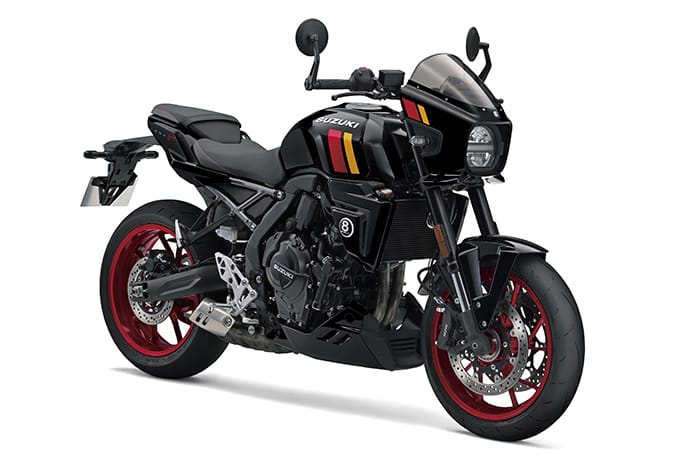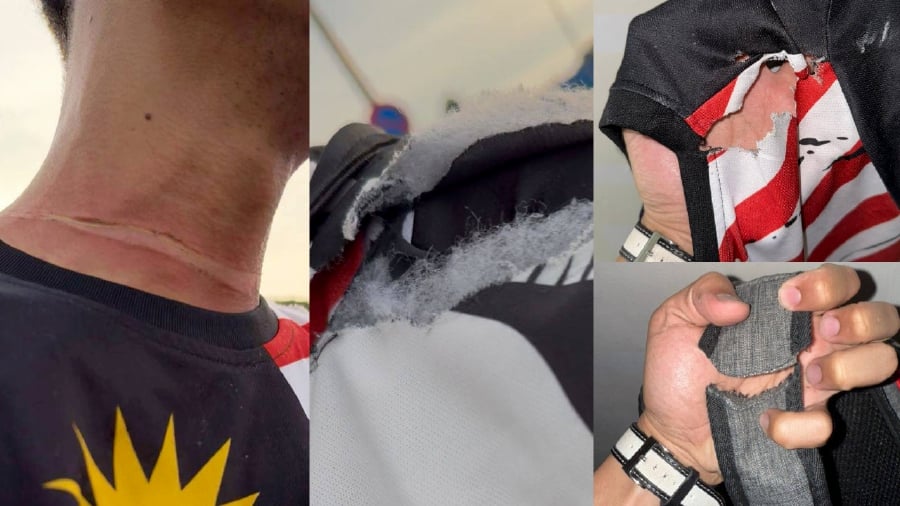-
Slick racing tyres should never be used on public roads.
-
They pose more disadvantages and danger if they are.
-
Current street tyres are already better than some DOT race tyres from just 5 years ago.
We’ve written about it in just about every article about tyres and yet there are still some bikers who continue to use slick racing tyres outside the racetrack i.e. public roads.
Our friend Haizal Omar posted on his Facebook recently that he saw bikers equipping their bikes with slick racing tyres and riding them on the road. He also went to highlight why slicks are a bad idea on public roads.
Haizal is the lead instructor at his Alpha Track Academy and also an instructor at the Ducati Riding Experience (DRE). He’s also completed the instructor modules in the California Superbike School (in California, USA under the tutelage of guru Keith Code). So we listen when he talks.
So, why is using “slicks” such a bad idea? All the MotoGP and professional riders use them to win races, after all. That must mean they grip like crazy, right? They are expensive but they are a necessary part of riding quickly, correct? And since they grip really hard, it means that they also make riding much safer, right?
But before we carry on, what are racing slicks? The short answer is tyres that are exclusively meant for racing. They’re called slicks because they’re devoid of grooves on the carcass, in order to present an uninterrupted surface called footprint to the road surface. More footprint equals more grip.
But there are serious caveats why they shouldn’t be used on public roads. Unheeding these conditions will result in (touch wood) unwanted situations sooner or later.
By why? Let’s examine.
1. Temperature
This is the most obvious factor.
All types of tyres work at their optimum levels within a certain heat range. However, slicks work best around 100-degrees Celsius for the front and 120-degrees Celsius for the rear. That’s as hot and hotter than the boiling point of water at sea level.
This is why race teams wrap them in tyre warmers prior to a race.
The warmers are set at 90-degrees Celsius, for at least one hour.
Notice why the pro riders usually set their fastest race times after the third lap or in the middle of the race? Why do MotoGP riders keep talking about caring for their tyres?
The answer is temperature and how to maintain it within that range.
The point is, who carries tyre warmers to BHP Gombak for their “Karak Highway GP?” So firstly, the starting temperature’s already incorrect.
Secondly, running on public roads even without traffic will not build up temperature quickly enough, lest the biker rides like a total maniac, thereby endangering himself and innocent members of the public.
Thirdly, even if the rider is able to heat the tyres up to their optimum operating temperature, traffic, road, and weather conditions will conspire slow him down at some point, forcing the tyres to cool down to below their working temperatures.
2. Heat cycles
You will see this after you ride hard on the roads or the track — that blue/purple band on the edges of the tyres. The bands are indicative of the tyres releasing their oil after a “heat cycle.” This is natural as tyres DO contain oil as part of their compounds.
A heat cycle means the process of letting the tyres cool from working temperature back to ambient temperature. Depending on brand and compound, a racing slick lasts very few heat cycles, some as low as just 8.
That means even if you could work them up to working temperature, you could only use them for 4 daily commutes — assuming you riding to work and back home.
Regardless if you still have 99% rubber, those slicks are already useless after those cycles. In other words, no grip.
3. Cold shear
A biker once showed me his rear slick when I suggested that slicks shouldn’t be used on the road. On the edges were these bits of rubber not unlike what you get when you use a rubber eraser on paper.
Riders usually associate this condition to a grippy tyre but these were large and deep, instead.
It’s a condition called “cold shear.” As the name suggests, the surface is torn off due to being used below operating temperature. Instead of the tyre rolling across the road, it actually ploughs through. The tyre may even throw off chunks of rubber in extreme cases.
4. Weather conditions
This is the other obvious reason, apart from temperature.
Slicks are meant to work only in one weather condition: Dry. The grooves of a tyre help to evacuate water between the contact patch and road surface and provide grip. Conversely, the lack of grooves will cause the tyre to aquaplane.
To be fair, slicks can work on damp roads (provided they’re up to temperature) but not over standing water.
5. Suspension settings
Using different tyres need different suspension settings. However, it’s much less crucial in using street tyres than it is for slicks. On the other hand, using street settings for slicks may not put enough stresses to warm them up. Then again, resorting to track settings for the streets would result in an uncomfortable ride.
6. You’re trying to win… what?
If you really want to experience slicks at their optimum levels, there’s no better place than at the track. Here, your slicks will warm up quicker even if you don’t use a warmer. Just take it easy for the first few laps and then put hammer down when the tyres have warmed up sufficiently
7. Street tyres are awesome
Street tyres these days perform at levels we couldn’t even dream of two decades ago. Sport-touring tyres like the Bridgestone T31 and Pirelli Diablo Rosso III stick like mad in the dry and the rain.
In fact, we rode the Panigale 959 equipped with the Diablo Rosso III at the Buriram circuit during the bike’s launch and not one rider complained about lack of grip.
Our colleague Sep Irran tested the Bridgestone S22 at the Jerez Circuit on a cold day. Again, the tyres gave so much confidence.
In fact, the DOT street race tyres such as the Bridgestone R11, Pirelli Diablo Corsa SC1, Metzeler Racetec RR K3 and others offer so much grip on the latest superbikes we tested that we found them too good for the bikes!
So save your money and your skin and get the latest DOT race tyres. They warm up quickly, can last over many more heat cycles work in any condition, comfortable, and are definitely cheaper and easier to maintain than slicks.
8. Attend riding classes
Through the lessons learned at Most Fun Gym and California Superbike School, tyre and grip “problems” are usually the direct results of incorrect riding techniques. Those schools don’t talk about what bike you ride or tyre you use, instead they look at how you ride to make the most of what you have.
Conclusion
The advantages of using street tyres for public roads far outweigh what could be obtained from using slicks. Which is actually like 10 vs. 0.
We’re not criticising you if you do use slicks but give a thought to what we wrote and switch back to street tyres. You’ll be amazed at what you could do on them.


